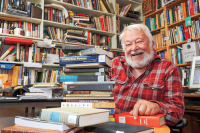Wong trial testimony to follow jury selection
Court testimony could start this week in the case of a Florida man who gunned down state Trooper Shawn Blanton more than two years ago in what should have been a routine traffic stop.
Blanton was killed June 17, 2008, after pulling over a pickup truck driven by Edwardo Wong on Interstate 40 near Canton. Wong, who does not deny killing Blanton, is charged with first-degree murder. He could face the death penalty if found guilty.
A camera mounted in Blanton’s patrol car showed images of Wong; a microphone worn by the trooper captured audio of Wong telling Blanton he had a gun, and recorded the sound of three shots. After his arrest by Haywood County Sheriff’s deputies, 316 grams of marijuana and 57 tablets of ecstasy were found in Wong’s truck. Blanton’s service weapon and two other handguns also were discovered.
The trial was moved from Haywood to Catawba County because of pretrial publicity tainting the local jury pool. Blanton’s death, followed by the death of his prematurely born son, Tye, fueled wall-to-wall news coverage in the wake of the shooting.
Twelve jurors were seated by court’s end on Monday, but three alternates had yet to be chosen. The trial’s start-time hinged on the completion of jury selection. Once it actually gets going, Defense Attorney Mark Melrose estimated the trial would last eight to 10 weeks, though he hoped for just six weeks.
“We thought it would take two to three weeks for jury selection, and that’s pretty much what it took,” said Melrose, who lives in Waynesville.
Related Items
Melrose said jury selection is the most tedious, time-consuming part of trials such as this one.
“You are meeting all these strangers, and trying to learn who and what their views are,” he said. “It is very stilted.”
Many of the questions were geared toward uncovering potential jurors’ feelings about the death penalty. Melrose said he and co-defense attorney Randal Seago worked toward identifying and removing jury candidates who were strongly biased against Wong’s side. If the prosecution does the same — that is, not seating jurors with strong biases against their side — then ultimately you have as fair a trial situation as possible, Melrose said.
Once testimony begins, “it just becomes a question of presentation,” the attorney said. “We have been dealing with these witnesses and the evidence for two years.”
District Attorney Mike Bonfoey declined to comment on the proceedings.









